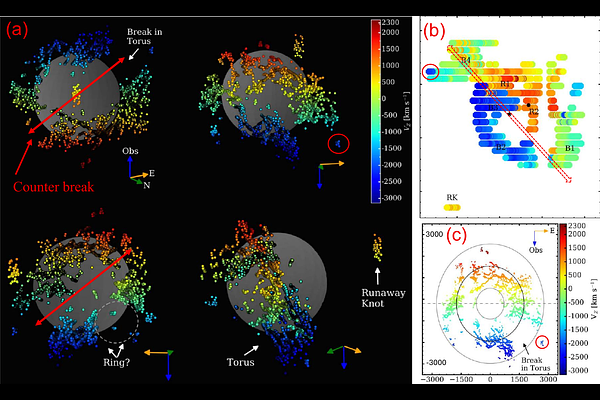Attributing the point symmetric structure of core-collapse supernova remnant N132D to the jittering jets explosion mechanism

Attributing the point symmetric structure of core-collapse supernova remnant N132D to the jittering jets explosion mechanism
Noam Soker Technion, Israel
AbstractI identified a point-symmetric morphology in the core-collapse supernova (CCSN) remnant (CCSNR) N132D, composed of two symmetry axes: the short symmetry axis extending from the northwest ear and through the center of the iron-rich emission on the other side, and the second along the long dimension of N132D and coincides with the extension of the central oxygen-rich gas to the northeast. Namely, the point-symmetry of the outer zones of CCSNR N132D correlates with that of the oxygen-rich gas near the center. The surrounding gas cannot shape the inner oxygen-rich material, implying that the point-symmetric morphology is a property of the explosion mechanism, as predicted by the jittering jets explosion mechanism (JJEM). The oxygen-rich material is known to be in a torus. According to the JJEM, an energetic pair of opposite jets, more or less perpendicular to the plane of the torus, has shaped the torus; this pair is along the short symmetry axis. Another energetic pair, perpendicular to the first one, shaped the elongated, large-scale structure of CCSNR N132D. I discuss how the JJEM accounts for two perpendicular pairs of jets and the unequal jets in each pair. CCSNR N132D is the fifteenth CCSNR with an identified point-symmetric morphology attributed to the JJEM. Because the neutrino-driven mechanism cannot explain such morphologies, this study further strengthens the claim that the JJEM is the primary explosion mechanism of CCSNe.